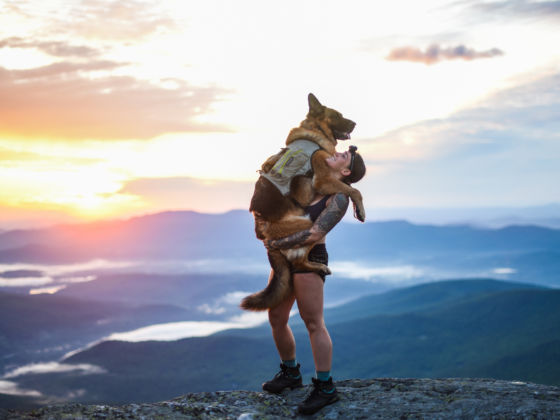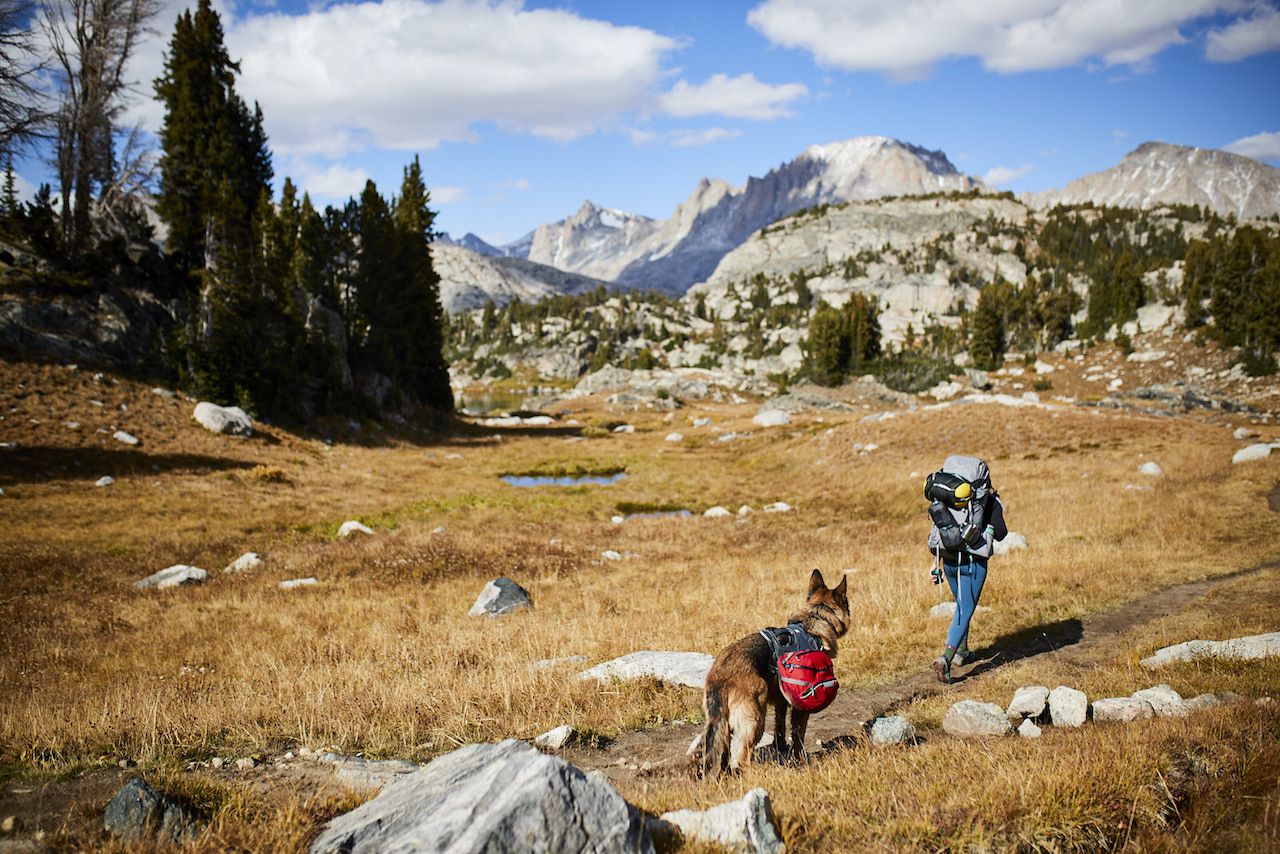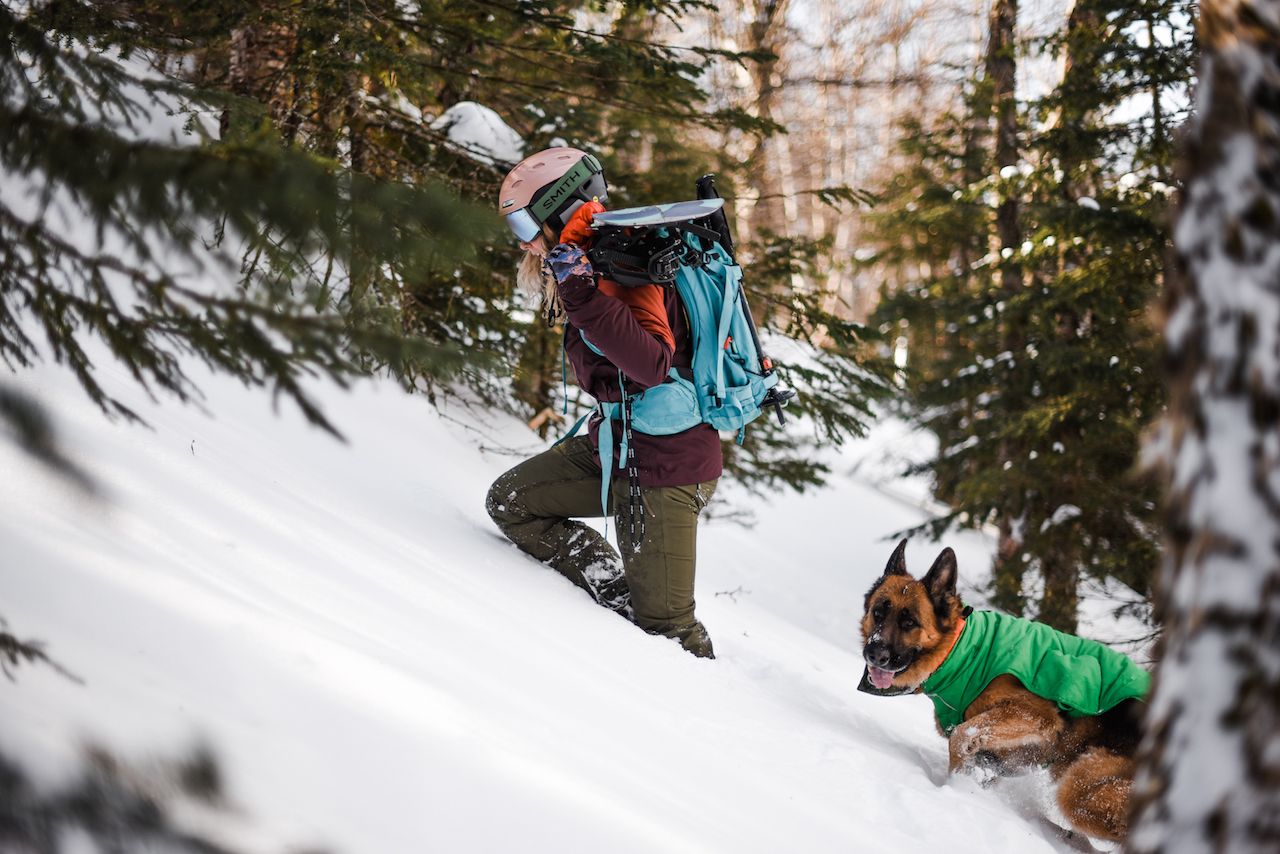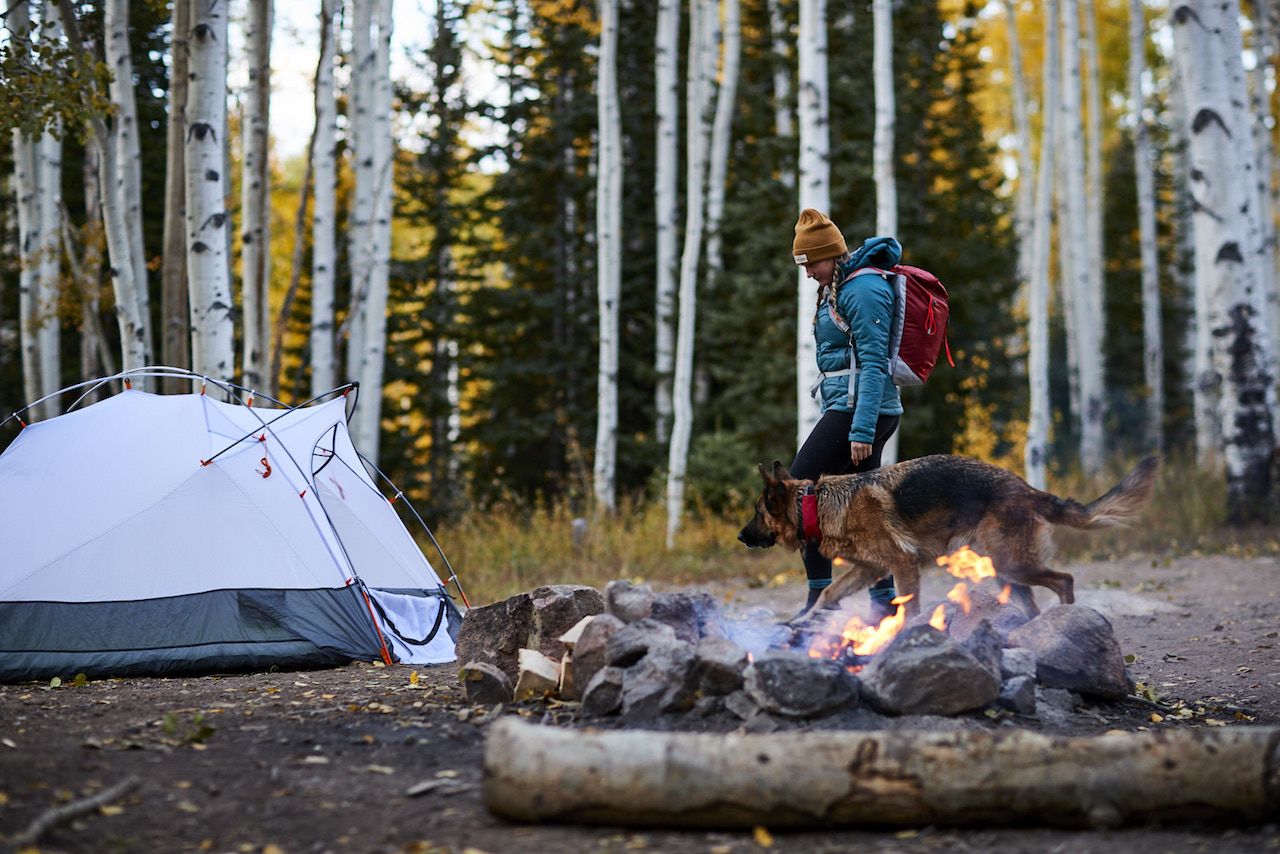Adventure outdoors has a way of bringing people together, and for many families, backpacking with a dog is a way to bond with their four-legged friend. Few people know that connection quite as well as Nicole Handel and her trail dog Bear.
This interview has been edited for length and clarity.
Handel was never the outdoorsy type, but after inheriting Bear in the aftermath of a breakup she realized that, like most dogs, the active German Shepherd loved spending time outside. The two began hiking regularly in the woods and mountains near their home in Vermont, and what started as a way for them to get some exercise together quickly turned into a deeper connection.





